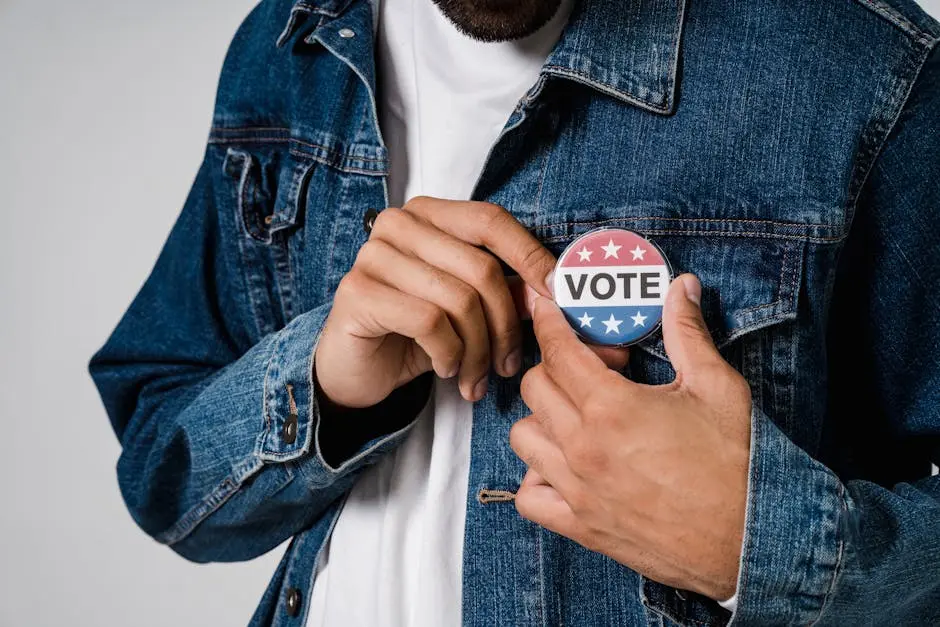
10 Ways Political Clothing Lets You Make a Statement
Share
In today’s world, fashion extends far beyond just aesthetics. It’s a powerful tool for communication and can be especially poignant when it comes to making political statements. Political clothing allows individuals to express their views, influence conversations, and engage in activism all while walking down the street. In this blog, we delve into how you can utilize political clothing to speak your truth and inspire change.
1. Expressing Personal Beliefs
Political clothing provides a platform to express what you stand for without having to say a word. Be it through slogans, symbols, or imagery, fashion becomes a reflection of your personal beliefs. Wearing such clothes can often stir curiosity, leading to others wanting to know more about the message you are conveying. In this way, fashion not only articulates your stance but also stimulates interest, potentially turning daily outings into opportunities for advocacy.
2. Supporting Meaningful Causes
Wearing apparel that highlights initiatives or organizations allows you to show support publicly. It amplifies the voices of those organizations and can often help in fundraising for important causes. For instance, a T-shirt featuring a well-known climate change advocacy logo can extend awareness about environmental issues while promoting sustainability. This reflects your commitment to being part of a broader movement, nurturing a sense of unity and purpose.
3. Initiating Conversations
A well-chosen piece of political clothing can spark discussions and encourage others to engage with the messages you wear. This can lead to more educated and informed conversations about the issues that matter. Imagine walking into a room with a powerful statement emblazoned across your chest—people are likely to ask about it. These conversations not only spread awareness but can also enlighten others about diverse perspectives and foster empathy and understanding.
4. Raising Awareness
Clothing with bold messages or images can raise awareness about lesser-known issues or events, making it a valuable tool in educating the public. A graphic depicting the devastating effects of deforestation, for instance, can prompt discussions and encourage individuals to research and learn more. It’s a visual statement that transcends language barriers, making the message accessible to a diverse audience. This empowers the wearer to become an ambassador of sorts, advocating for change.
5. Promoting Inclusivity
Fashion that represents diverse groups can foster inclusivity and acceptance, highlighting the richness of varying cultural and social perspectives. By wearing clothing that celebrates different identities, you’re promoting a more inclusive society. This is particularly important in a world where differences can often lead to division. Expressing support for inclusivity through clothing can challenge stereotypes and encourage others to embrace diversity. This can lead to environments that are welcoming and appreciative of the unique qualities each individual brings.
6. Empowering the Wearer
Political clothing can empower individuals by giving them a sense of agency and participation in wider social movements. Wearing something that aligns with your beliefs reinforces your identity and can strengthen your resolve to advocate for change. It serves as a reminder of your values and the importance of standing up for what you believe in. This empowerment is not only personal but can inspire others to also find their voice and join in collective efforts to address societal challenges.
7. Confronting Social Norms
By challenging traditional views, political attire can question and redefine societal norms, pushing boundaries and prompting change. Fashion has always been at the forefront of cultural revolutions, whether through punk rock’s defiance or the minimalist statements of modern activism. Wearing clothing that challenges the status quo invites others to reconsider their assumptions and can drive societal progress. It’s a bold step toward creating an environment where diverse ideas can not only coexist but thrive, paving the way for new, inclusive paradigms.
8. Connecting with Like-Minded Individuals
Wearing political messages can help connect with others who share similar views, fostering a sense of community and solidarity. Meeting someone else who appreciates your political clothing choice can spark friendships and alliances, as shared interests naturally draw people together. This community can provide support and opportunities to collaborate on projects and initiatives, strengthening the impact you collectively have. By visually expressing your beliefs, you are more likely to attract those who understand and support your vision, creating an empowering circle of allies.
9. Championing Sustainability
Many politically-aware clothing brands focus on sustainability, allowing you to make ethical choices that align with your values. These brands often use eco-friendly materials and ethical production practices, ensuring that your fashion choices do not contribute to environmental harm. Supporting these brands means you’re not only promoting your beliefs through the messages on your clothes but also endorsing a conscientious approach to manufacturing. This dual commitment to political and environmental advocacy makes your choice of attire a powerful statement in itself.
10. Standing Out with Purpose
Beyond making a statement, political clothing lets you stand out in a crowd, showcasing your unique stance while fashionably making an impact. It’s an opportunity to defy conformity, allowing your wardrobe to speak volumes about your ideology. This distinctiveness comes from not just the design, but the message it carries, which can be both eye-catching and thought-provoking. Whether it’s through bold colors, unique cuts, or memorable slogans, your clothing becomes a beacon, inviting others to engage and reflect on what matters most to you.

